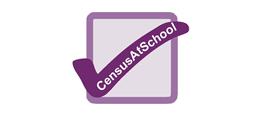Sampling
This set of resources is designed to provide students with the opportunity to infer properties of populations or distributions from a sample. It is important that students understand the limitations of different sampling processes.
Visit the secondary mathematics webpage to access all lists.
Statistics in Your World - Level 4
‘Sampling The Census’ is a short classroom census used to convey the rationale and basic methodology of the ‘Census of Population’. The problems of question design and confidentiality are considered, and the census data is used to provide information and to make comparisons between regions and over a period of time.
For each unit there are comprehensive teacher notes giving an overview of the unit, the aims and objectives for that unit, and prior learning or prerequisites and the equipment required.
Sampling, Data and Bias
This resource presents the findings of a MORI poll in varied formats. Research is carried out regularly by the Ministry of Defence to track attitudes of the public towards the Armed Forces over time, looking at differences between different sectors of the population and areas of the country, and attitudes to other public bodies.
The student worksheets challenge students to extrapolate key findings, to review various data sources, identify key questions and bias. Students are encouraged to cross-reference and to interpret and evaluate findings.
Chapter 3: Using Random Samples of Real Data
The chapter ‘Using Random Samples of Real Data’ contained in the booklet ‘Relevant and Engaging Statistics and Data Handling’ describes the steps required when taking and using random samples of real data from the CensusAtSchool website. In addition the resource offers some ideas which enable students to use samples of real data in their data handling and statistics lessons.
Access to a computer and a spreadsheet is required.
Collecting Data
This resource contains nine instant maths ideas exploring what makes a good questionnaire, tasks requiring students to make their own questionnaire, experiments for students to perform in order to collect data, and tasks looking at the subtleties of sampling and grouping data. There are some suggested questions and activities for students with clear guidance useful to support and challenge students.
Activities 3.1.3 and 3.1.6 are specific examples of activities involving sampling. There is also comprehensive review of the language of sampling at the end of the resource. This could be used for matching, sorting or categorising activities.
Relative Frequency
The activity contained in this resource uses the idea of estimating probabilities by finding the relative frequency of given data. The activity requires students to collect information about their favourite subjects at school. Using sampling from different populations students investigate the effect of sample size on the estimated probability. There is a range of different data available to explore.




